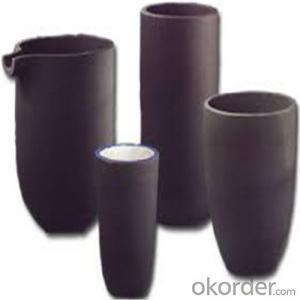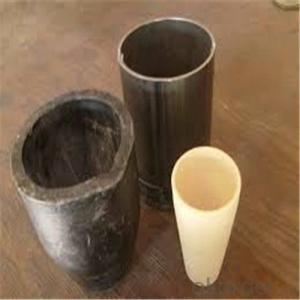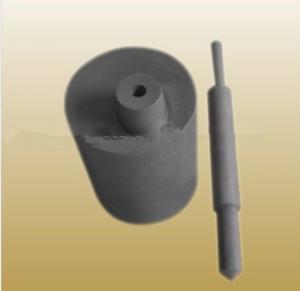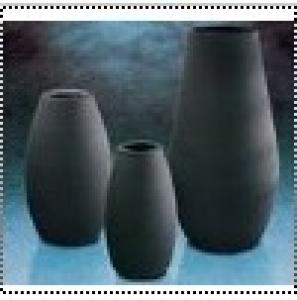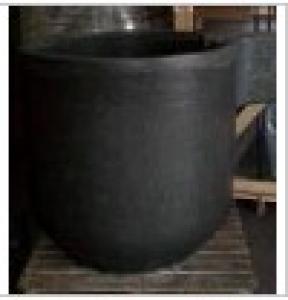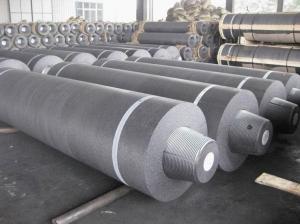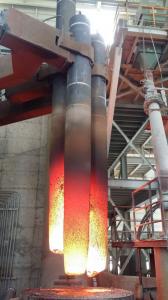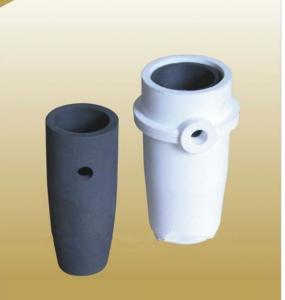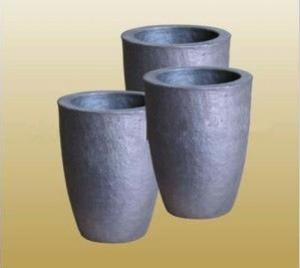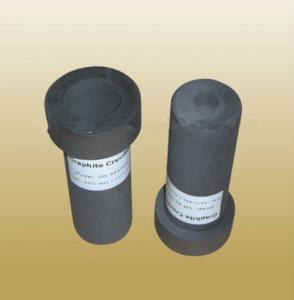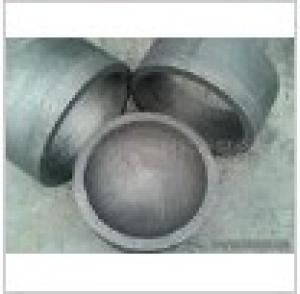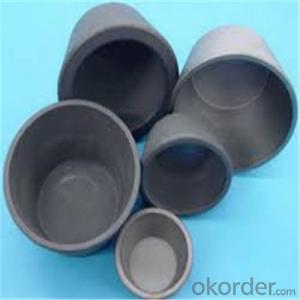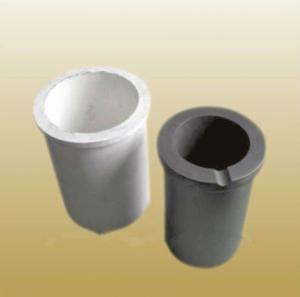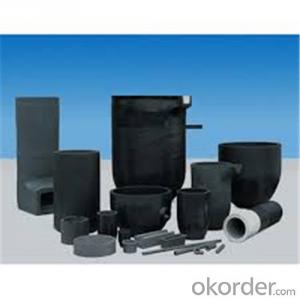Refractory Crucibles Sic Crucible For Brass
- Loading Port:
- Shanghai
- Payment Terms:
- TT OR LC
- Min Order Qty:
- 1 pc
- Supply Capability:
- 1000 pc/month
OKorder Service Pledge
OKorder Financial Service
You Might Also Like
Quick Details for Refractory Crucibles Sic Crucible For Melting Copper/Brass/Aluminum
| Type: | High Strength, graphite crucible crucible | Application: | melting metal | Height: | as your requirements |
| Composition: | High Pure | Top Diameter: | 10-600mm | Bottom Diameter: | 10-1000mm |
| Place of Origin: | China (Mainland) | Brand Name: | Model Number: | ||
| Color: | Black grey | Si3N4%: | 5min | Fe2O3%: | 0.7max |
| C%: | 30-45 | Apparent porosity: | 30max | Refractoriness: | 1680 |
| Bulk Density: | 1.71min | Using life: | >5000 hours | MAX temperature: | 1600c |
Packaging & Delivery
| Packaging Details: | Seaworty packing or as per customer's detail requirement of graphite crucible. |
| Delivery Detail: | within 20-30 days after confirm order of graphite cru |
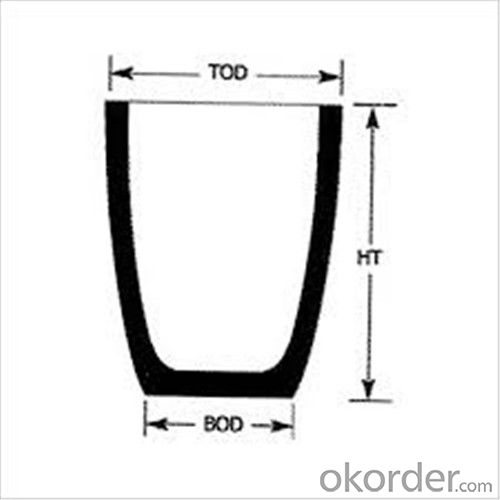

Refractory Crucibles Sic Crucible For Melting Copper/Brass/Aluminum
Physicochemical Properties
Type of Crucible | Type S | Type D |
Carbon Content/% | ≥38 | ≥45 |
Bulk Density/(g/cm3) | ≥1.70 | ≥1.85 |
Apparent Porosity/% | ≤29 | ≤21 |
Compression Strength/MPa | ≥20 | ≥25 |
Refractoriness/°C | ≥1400 | ≥1400 |
Type S: Clay graphite crucible
Type D: Isostatic pressing graphite crucible
Cited from CNS China National Standard of Graphite Crucible, which is solely drifted by TIANFU company.
Content Composition
C% | Sic% | AL2O3% | SIO2% |
45%-50% | 20%-30% | 10%-12% | 15-25% |
FAQ
1.What's your MOQ?
We will indicate the MOQ for each item in the quotation list. We accept the sample and trail order.
2.Can I negotiate the Prices?
Sure, we may consider discounts for bulk order of products.
3.How long will it take to complete my order?
For the stock items, we can arrange the shippment within 2~3days after received your payment. For the customized items, we will indicate the delivery time in the quotation list.
4.Can you give warranty of your products?
Yes, we extend a 100% satifisfaction guarantee on all items. Please feel free to provide timely feedback if you're not satisfied with N&D's Quality and Service. For the overseas orders, if there is a quality problem, please kindly to provide the picturers to show the problem by e-mail. We will provide the replacements to you at our cost according to actual conditions.
Welcome to visit our factory.
- Q:What are the uses of graphite crucibles?
- Therefore, aluminum, magnesium, zinc and their alloys are widely used in the manufacture of automobiles, motorcycles and electronic products. Such as die-casting production automobile and motorcycle wheel hub, engine cylinder head, brake, air filter, piston, radiator, steering wheel frame, and electronic products in the mobile phone shell, etc..
- Q:What are the different methods of preventing graphite crucible breakage?
- To prevent the breakage of graphite crucibles, there are various methods that can be utilized: 1. Ensuring proper handling and storage is crucial. Careful handling and avoiding sudden or rough movements that could cause impact or stress on the crucible are effective ways to prevent breakage. Additionally, storing the crucibles in a secure location, away from potential hazards or sources of damage, is important. 2. Following controlled heating and cooling procedures is essential. Graphite crucibles are exposed to high temperatures during the melting process, so it is necessary to heat and cool them gradually and in a controlled manner. This approach helps minimize thermal shock and stress on the crucible, thereby reducing the risk of breakage. 3. Preheating the graphite crucible before use can also prevent breakage. This involves gradually heating the crucible to a specific temperature range before adding the molten material. Preheating minimizes the temperature difference between the crucible and the molten material, thus reducing the risk of thermal shock and potential breakage. 4. Applying protective coatings to the graphite crucible provides an additional layer of protection against breakage. Coatings like boron nitride or alumina improve thermal shock resistance and decrease the likelihood of crucible failure. 5. Regularly inspecting and maintaining the graphite crucible is crucial. Regular inspections for any signs of damage or wear, such as cracks, chips, or defects, are necessary to prevent breakage. Addressing these issues immediately can prevent further deterioration. Additionally, routine maintenance, including cleaning and removing build-up or impurities, can prolong the crucible's lifespan and prevent breakage. By implementing these methods, individuals or industries can significantly reduce the risk of graphite crucible breakage, ensuring their longevity and optimal performance in various high-temperature applications.
- Q:Can graphite crucibles be used for ceramic production?
- No, graphite crucibles cannot be used for ceramic production. Ceramic production requires crucibles made from materials like alumina or zirconia, which can withstand high temperatures and provide a stable environment for the ceramic materials. Graphite crucibles are generally used for high-temperature applications involving metals and alloys.
- Q:Can graphite crucibles be used for carbon and graphite production?
- Yes, graphite crucibles can be used for carbon and graphite production. Graphite crucibles are specifically designed to withstand high temperatures and are commonly used in various industries, including carbon and graphite production. They provide a stable and reliable container for melting and refining carbon and graphite materials.
- Q:Can a graphite crucible be used for ceramic coating applications?
- Using a graphite crucible for ceramic coating applications is not possible. The reason is that graphite is a highly conductive material that can react with certain chemicals used in ceramic coating processes. This can lead to contamination of the coating material. Moreover, graphite has a lower melting point compared to the temperatures required for ceramic coating. This may result in the degradation or failure of the crucible during the coating process. Therefore, it is recommended to utilize crucibles made from materials specifically designed for ceramic coating applications, such as alumina or silica. These materials have higher melting points and are chemically inert, ensuring the integrity of the ceramic coating process.
- Q:Does a graphite crucible react with any substances during use?
- No, a graphite crucible does not react with any substances during use.
- Q:Are there any safety precautions to take when using a graphite crucible?
- There are various safety measures that need to be taken into account when utilizing a graphite crucible. To start with, it is crucial to handle the crucible with caution and avoid any instances of dropping or striking it against hard surfaces. Graphite crucibles are relatively delicate and can easily crack or break if handled improperly, which could result in harm or equipment damage. Moreover, it is imperative that graphite crucibles are stored in a dry and clean area in order to prevent contamination or chemical reactions. Moisture or impurities can cause the crucible to deteriorate or react with the heated materials, compromising its reliability and potentially causing accidents or failures. In addition, it is of utmost importance to utilize appropriate personal protective equipment (PPE) when working with a graphite crucible. This includes wearing heat-resistant gloves, goggles, and a lab coat or protective clothing to shield against heat and potential splashes or spills. When heating or cooling the crucible, it is advised to do so gradually in order to avoid thermal shock. Quick temperature changes can lead to the crucible cracking or breaking, posing possible danger or damage. Furthermore, it is essential to be mindful of the materials being utilized in the crucible. Certain substances may produce toxic fumes or hazardous reactions when heated in a graphite crucible, thus proper ventilation and knowledge of the materials' properties are crucial. Finally, after usage, it is vital to allow the crucible to completely cool down before handling or storing it. Attempting to handle a hot crucible can result in severe burns or injuries. By adhering to these safety precautions, the likelihood of accidents, injuries, or damage when utilizing a graphite crucible can be significantly diminished, ensuring a safe and efficient working environment.
- Q:Are graphite crucibles suitable for use in microwave heating?
- No, graphite crucibles are not suitable for use in microwave heating.
- Q:Can graphite crucibles be used for metal powder atomization?
- Metal powder atomization can utilize graphite crucibles. These crucibles are widely employed in metallurgical procedures because of their impressive thermal conductivity, chemical inertness, and resistance to extreme temperatures. During metal powder atomization, the crucible is subjected to high temperatures, causing the metal feedstock to melt and subsequently be atomized into fine powder particles through the use of a gas or water jet. The graphite crucible is instrumental in maintaining a stable temperature throughout the atomization process, as well as facilitating efficient heat transfer, leading to the production of consistent and high-quality metal powder. Moreover, graphite crucibles possess the ability to withstand the corrosive properties of molten metals, thereby making them suitable for a wide range of metal powder atomization applications.
- Q:Electromagnetic induction heating device into the copper coil heater, to use more power consumption to reach the melting temperature of iron?
- The roommate's induction heater comes from a copper tube with water through it
1. Manufacturer Overview |
|
|---|---|
| Location | |
| Year Established | |
| Annual Output Value | |
| Main Markets | |
| Company Certifications | |
2. Manufacturer Certificates |
|
|---|---|
| a) Certification Name | |
| Range | |
| Reference | |
| Validity Period | |
3. Manufacturer Capability |
|
|---|---|
| a)Trade Capacity | |
| Nearest Port | |
| Export Percentage | |
| No.of Employees in Trade Department | |
| Language Spoken: | |
| b)Factory Information | |
| Factory Size: | |
| No. of Production Lines | |
| Contract Manufacturing | |
| Product Price Range | |
Send your message to us
Refractory Crucibles Sic Crucible For Brass
- Loading Port:
- Shanghai
- Payment Terms:
- TT OR LC
- Min Order Qty:
- 1 pc
- Supply Capability:
- 1000 pc/month
OKorder Service Pledge
OKorder Financial Service
Similar products
New products
Hot products
Related keywords

